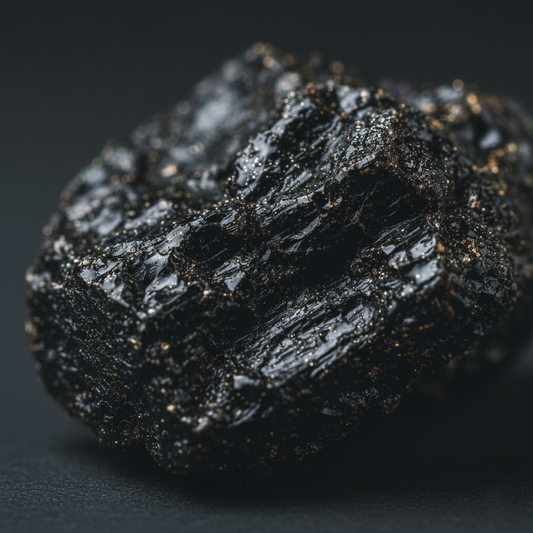The Basics: What Shilajit Is and Why Timing Matters

Shilajit is a natural, mineral‑rich resin that forms in the high‑altitude rocks of the Himalayas, Altai, and other mountain ranges. It slowly condenses from plant and microbial matter compressed over centuries, resulting in a sticky substance that contains fulvic acid, other organic acids, thousands of minerals, and trace bioactive compounds.
Traditional Ayurvedic medicine has long prized shilajit for its antioxidant and anti‑inflammatory properties. Modern research shows that the fulvic acid in shilajit boosts the absorption of its nutrients, turning it into a potent bioavailability enhancer.
Because shilajit’s effects accumulate over time rather than offering an immediate spike, the time of day you take it matters. A dose in the morning can gently elevate alertness and metabolic tone, supporting the body’s natural energy cycle. An afternoon or early‑evening intake may bolster hormonal balance and provide subtle restorative effects without interfering with sleep. Taking shilajit too late in the day can sometimes leave the body’s restorative processes disrupted, as the compound’s mild stimulant traits linger.
In short, aligning shilajit dosing with the body’s circadian rhythm increases its benefits—boosting daytime energy, optimizing hormone support, and preserving nighttime recovery.
How the Body Responds to Timing
Morning
Taking shilajit in the morning aligns with the body’s natural rise in cortisol and norepinephrine. This hormonal surge increases alertness and prepares the metabolism for the day ahead. The result is a smoother transition into work or daily activities with enhanced focus and energy.

Pre‑Exercise
When taken before a workout, shilajit acts as a natural energy buffer. It helps your muscles sustain effort, and some studies suggest it can improve lactate clearance, which may delay the onset of muscle fatigue. This makes it a handy supplement for athletes or anyone looking to boost endurance.
Afternoon/Noon
Many people feel a dip in energy after lunch. Shilajit can help mitigate this slump by supporting steady glucose uptake and stabilizing blood sugar levels. A small dose around midday can keep you from reaching that “post‑lunch sluggishness” point.
Evening
In the evening, shilajit’s focus shifts to cellular repair. Some users report more restful sleep when they combine it with a warm drink. The supplement may help your cells recover overnight, giving you a refreshed start tomorrow.
Scientific Study on Energy Boost | Research on Sleep Quality
Timing by Form: Resin, Powder, And Capsules
Resin
- Take on an empty stomach to help the body absorb the fulvic acids more efficiently.
- Start with a pea-sized piece, then dissolve it in a small amount of warm milk or water.
- The warm liquid helps the resin break down quickly, giving you a smoother experience.
Powder
- Powder can be mixed into smoothies, teas, or juices, making it easy to incorporate into your daily routine.
- For a boost of energy, consume it before or after a workout.
- If you prefer a steady lift throughout the day, take it mid‑morning.
Capsules
- Capsules provide a consistent dose, which is handy for those who want a reliable daily level.
- Timing depends on your goal:
- Morning – helps with focus and alertness for work or school.
- Afternoon – can support a metabolic lift or dietary support during lunch.
- Evening – may aid recovery and promote better sleep quality.
These timing suggestions help you tailor your shilajit intake to match your lifestyle and desired benefits.
Establishing a Sustainable Cycle
A single, uninterrupted regimen of daily shilajit can lead to tachyphylaxis, a rapid decrease in effectiveness over time, and may clash with the body’s natural hormonal cadence. Instead, breaking the dose into intentional cycles provides both a ''wash‑out'' period and a chance for the body to reset, mirroring the ebb and flow of natural rhythms.

Standard Cycle
- 45 days on, 15 days off: This 60‑day block gives enough time for sustained benefits and a built‑in recovery phase. The off‑period helps to resynchronize hormone production and reduces the risk of tolerance.
Progressive Cycle
- 60 days on, 30 days off: For individuals who maintain stable results over a longer stretch, extending the on‑period can deepen the adaptation, while the longer off window further lowers the risk of diminishing returns.
Seasonal Cycle
- Adjust the timing of the dosing window to align with the peak activity of the shilajit‑harvested plant and your personal energy dynamics. For example, a summer‑focused on‑phase can coincide with higher daily energy demands, whereas a winter‑off phase allows the body to conserve resources.
Adopting a structured cycle not only protects against tachyphylaxis but also respects the circadian and seasonal cues that guide our internal bioenergetics. You may find it helpful to log your symptoms and energy levels week by week to fine‑tune the schedule that works best for you. Tachyphylaxis: What It Means for Supplements | Hormonal Rhythms, and Seasonal Adaptation
Recognizing When a Break Is Needed
When using shilajit, it’s essential to know when your body needs a pause. Watch for the following signs, and then start again with a lighter dose.

- Physical Exhaustion or Unrelieved Soreness – If repeated workouts or daily activities leave you sore and fatigue does not improve with standard rest or nutrition, it may signal that your body is overused. A study on natural supplements suggests that periodic breaks help sustain energy levels over time, Healthline.
- National Plateaus – A steady decline or lack of change in testosterone or cortisol levels after a period of supplementation can indicate the body’s adaptive response. Hormonal cycling is normal, but excessive plateauing may call for a reset. For more on hormone balancing, see this review from Endocrine Reviews.
- Persistent Digestive Discomfort – Ongoing bloating, gas, or irregularity that persists across multiple doses could mean your gut is stressed. Lingering symptoms, even with reduced intake, usually require a break before reintroduction.
How to Ease Back In
After a break, resume with a low dose (about 20 mg per day), then slowly increase while watching for changes in vitality or sleep quality. Keep a simple log of energy levels and bedtime ease to gauge if the adjustment is working.
Hormonal Support: Testosterone and Beyond
A controlled trial found that taking 250 mg of purified Shilajit twice nightly for 90 days significantly increased both total and free testosterone in men aged 45‑55. The study suggests that a late‑afternoon or early‑evening dose may be most effective for endocrine benefits. PubMed

Optimizing Lipid Profile and Antioxidants
Daily supplementation of 2 g of shilajit for 45 days lowered triglycerides and boosted HDL, supporting cardiovascular health PubMed.

Taking the dose in the early morning, followed by a light meal, helps sustain antioxidant levels throughout the day.
Tailoring Timing to Individual Sensitivities
- If you’re prone to caffeine‑like jitters, opt for the evening dose with a soothing warm beverage.
- Women may experience increased estrogen modulation; a mid‑morning schedule avoids disrupting menstrual cycles.
- Elderly users might benefit from a late‑morning dose paired with a small snack to stabilize glucose.

Quick Reference Table
| Time of Day | Desired Benefit |
|---|---|
| Sunrise | Focus, metabolism, and testosterone support |
| Pre‑Workout | Energy surge, lactate clearance |
| Midday | Glucose stability prevents a slump |
| Pre‑Bed | Cellular repair, deep sleep |
Frequently Asked Questions (FAQs)
Is Shilajit Safe to Take at Night?
Nighttime dosing is generally safe and can aid the body’s natural restorative processes. Some users report a mild increase in alertness after taking it, so if you feel more awake than usual, consider moving your dose to earlier in the day.
Can I Use It Daily, Or Do I Need Rest Days?
Many people find it helpful to cycle usage to maintain effectiveness. A common pattern is 45 days on followed by 15 days off, or a shorter routine such as a three‑week block with two rest days each week.
Does Form Matter for Timing?
The timing depends on the product form. Resin is best taken on an empty stomach for maximal absorption, powder is versatile and can be used with or without food, and capsules are neutral and can be taken in the morning for energy or at night for recovery.




